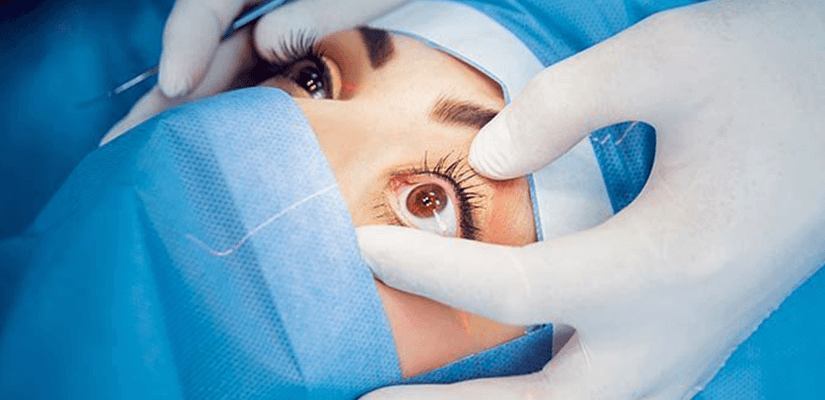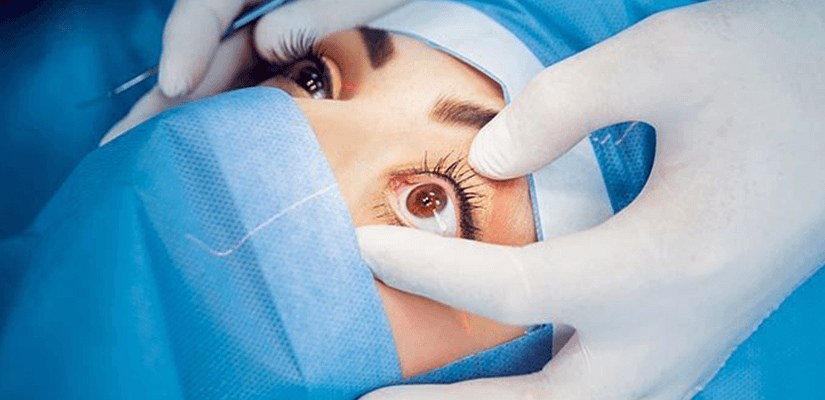Your Blurry Vision Could be Cataract

Cataract often known as Motiabindu refers to a cloudy formation in the lens of the eye. A cataract begins to develop when proteins in the eye form clusters that prevent the lens from sending clear images to the retina. A cataract is usually caused by our body’s natural aging process, but it can be the result of heredity or eye injury as well. This blog will provide you with all the information you need to know about Cataract.
In a study by the Indian Journal of Ophthalmology, there were 7.75 million people in 2001 who lost their eyesight due to cataract in India. This number is estimated to reach 8.25 million by 2020. Moreover, by 2020, cataract-related blindness in the 70+ age group will quadruple than other age groups.
Getting a timely diagnosis –
An ophthalmologist will perform a comprehensive eye exam to check for Cataract and to assess your vision. Commonly, a tonometry test is used for diagnosis, in which, a painless puff of air directed at the cornea measures your eye pressure. While inspecting, the doctor will dilate your pupils with eye drops. This makes it easier to check the optic nerve and retina at the back of your eye for any possible damage. Other tests can include checking your sensitivity to glare and color perception.
Signs and Symptoms of Cataract:
In the case of normal vision, the lens focuses light onto the back of the eye where images perceived by nerves are transmitted to the brain. However, when a cataract occurs in either or both eyes, vision becomes blurred as the light coming into the eye is concealed and distorted because of the clouding of the lens in the eye.
According to the American Academy of Ophthalmology (AAO), the following signs show the onset of cataract:
- Blurred, fuzzy, and hazy vision
- Seeing faded colors.
- Good vision in daylight but poor night vision.
- Colours seem faded
- Sensitivity to light
- Halos surrounding light
- Double vision in the affected eye
- Frequent changes in prescription glasses
Causes of Cataract:
Besides advancing age, cataract is also caused due to these factors:
- Exposure to ultraviolet radiation from sunlight and other sources
- Health conditions such as diabetes, hypertension, obesity
- Prolonged use of medication like corticosteroids and statins
- Previous eye injury or trauma, eye surgery, or advanced myopia
- Hormone replacement therapy
- Significant alcohol consumption and smoking
- Family history
- Smoking
- Exposure to ultraviolet radiation
- Diabetes
- Radiation therapy
Cataract Prevention and Treatment:
-
- Foods rich in omega-3 fatty acids (flax seeds, fish, spinach, soya bean), vitamin E (sunflower seeds, almonds, and spinach), lutein and zeaxanthin (green leafy vegetables) and Vitamin C (amla, oranges, kiwi, lemon) are known to decrease cataract risk.
- Regular eye screenings after the age of 40 years to check vision changes and early identification of cataract are crucial.
- Initially, at the onset of any symptom, stronger eyeglasses enhance magnification. Also, bright lighting in your home and other visual aids substantially improve vision.
- Surgery is only recommended when Cataract cause significant vision loss, which hampers your daily tasks.
Different Types Of Cataract Surgery:
Currently, the most widely available techniques to remove Cataract are:
- Micro Phacoemulsification (MICS): MICS involves the usage of ultrasound waves to dissolve the clouded lens and remove the pieces.
- Femto-Assisted Cataract Surgery (FLACS): The Femtosecond laser method involves the cutting of a microscopically thin flap on the surface of the cornea, post which a laser is used to correct any existing refractive errors.
- Extracapsular Surgery: It involves the removal of the cloudy part by making a long incision in the cornea. Afterward, an artificial intraocular lens replaces the natural lens.
Cataract generally worsens with passing time. If left untreated, Cataracts can damage the optic nerve of your eye.
Cataract surgery is considered to be safe with a high success rate. Most people can go home on the same day as their surgery. Being diagnosed with Cataract does not necessarily mean a permanent loss of vision quality, as cataract surgery is an effective way to improve your vision.
Request a call back



 Call-an-Ambulance
Call-an-Ambulance



